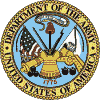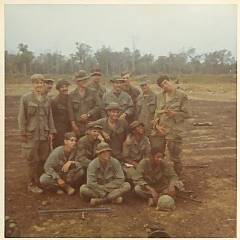| |
|
|
|
John Andrew Todd
First Lieutenant
HQ, 3RD REG ASSIST CMD (TRAC), MACV ADVISORS, MACV Army of the United States Buford, Georgia October 13, 1948 to July 09, 1972 JOHN A TODD is on the Wall at Panel W1, Line 54 See the full profile or name rubbing for John Todd |
  |
 |
|
My brother was a great guy, full of hope and promise, and one who could have contributed much to making the world a better place. He grew up a typical American kid of the 50s and 60s with a wide range of interests-- baseball, wrestling, dirtbikes, skydiving, girls, and eventually hopes of an Army career like our Dad. His death forever changed our family and the lives of those who loved him. We will always miss him and always remember.
Bill Todd |
Notes from The Virtual Wall1Lt Todd was the son of a career Army officer and was graduated from the Frankfurt (Germany) American High School in 1966. He attended the University of Georgia, using his grandmother's home in nearby Buford as his home of residence, receiving his degree and a commission as a Second Lieutenant in 1970. After completion of Airborne and Ranger training he was assigned as a platoon leader with 1st Plt, B Company, 2nd Battalion, 8th Cavalry, where he earned his Combat Infantry Badge, a Bronze Star with combat "V", and the Air Medal. Toward the end of his tour 2/8 Cav stood down for withdrawal and 1Lt Todd was assigned to duty as Aide-de-Camp to BGen Tallman. He received a meritorious Bronze Star and the Purple Heart posthumously.
The photo below is by courtesy of John Banicki, who served as 1Lt Todd's radioman in Bravo 2/8 Cav; it appears on his
B/2/8 Cav site  1Lt Todd, center person, back row. As American forces were withdrawn from South Vietnam the command structure necessarily changed. On 20 April 1971 the 3rd [Military] Regional Assistance Command (TRAC) was formed from the assets of the II Field Force headquarters at Long Binh. TRAC was responsible for overseeing U. S. Military Advisors throughout the 3rd Military Region. The battle for An Loc, capital of Binh Long Province, was one of the most important battles of the Vietnam War. It began during the 1972 North Vietnamese Spring Offensive, after most U.S. combat troops had departed South Vietnam, and extended over two months. The battle resulted in the virtual destruction of three North Vietnamese divisions and blocked a Communist attack on Saigon. The sustained intensity of combat during this battle had not been previously seen in the Vietnam War. Lieutenant Colonel James H. Willbanks, US Army (Ret), participated in the Battle of An Loc as an advisor to the 43d ARVN Regiment. He later wrote a study of the battle for the Army Command and General Staff College. LTC Willbanks recalls the incident as follows: "On 9 July, Brigadier General Richard Tallman, General McGiffert's successor as General Hollingsworth's deputy (who had been promoted to his rank only eight days earlier), landed in the city with several of his key staff officers to observe the progress of ARVN operations and coordinate the reinforcement effort. They were met by two advisers from the 18th ARVN Division, Major Joe Hallum of the 48th Regiment Advisory Team and the author [then-Captain Willbanks], who had joined the 43d [ARVN] Regiment after TF 52 was evacuated from the city earlier. As the helicopter departed, the general's party was struck by enemy artillery fire. Three American officers accompanying Tallman - Lieutenant Colonel Stanley Kuick, Major Richard Benson, and First Lieutenant Richard Todd - and Sergeant Son, an ARVN interpreter, were killed instantly. General Tallman, Major Hallum, and Captain Willbanks were wounded by the incoming fire. They were immediately evacuated by U.S. medevac helicopter to 3d Field Hospital in Saigon, where the general, mortally wounded, died on the operating table. The other two officers later recovered from their wounds."The four Americans who died in this incident have been remembered on The Virtual Wall:
|
| Contact Us | © Copyright 1997-2019 www.VirtualWall.org, Ltd ®(TM) | Last update 08/15/2019. |